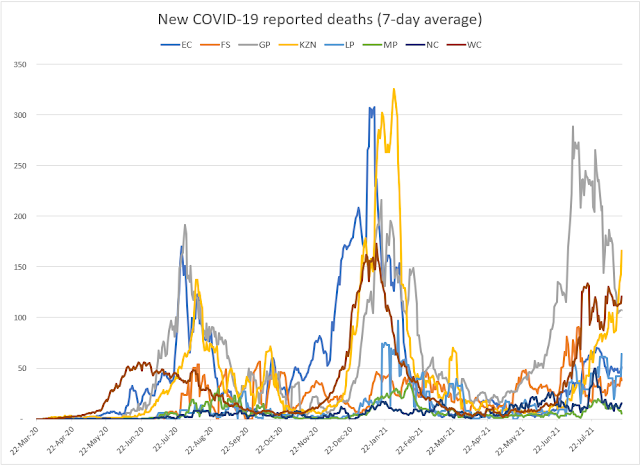Time to consider the 4th wave?
We have updated the NMG model to consider various scenarios for the 4th wave of COVID-19 infections for South Africa. You can access the model at https://nmg-covid-19.sctechnology.co.za/
It will take a sustained viral propagation above a threshold speed to generate a noticeable 4th wave. The first 4th wave scenario is displayed below assuming a viral propagation speed of Rt = 3.0 for a period of 100 days starting on 15 October 2021.
A material 4th wave could be caused by a viral strain with a slower speed of propagation but one that is less susceptible to immunity. The third scenario shows the impact of a viral propagation speed of Rt = 3.0 where some 5% of the population with immunity is susceptible to reinfection.
It is then fairly easy to generate a scenario that shows a 4th wave that is more devastating than the first three waves in South Africa. The fourth scenario below shows the impact of a viral propagation speed of Rt = 3.0 where some 10% of the population with immunity is susceptible to reinfection.
30 September 2021






Comments
Post a Comment